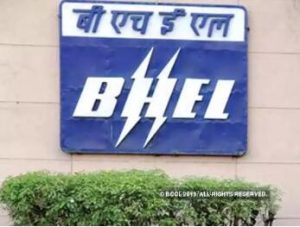
New Delhi: Bharat Heavy Electricals Limited (BHEL) on Thursday said it has successfully commissioned a 1.7-megawatt (MW) solar photovoltaic (PV) plant at Bina in Madhya Pradesh for the Indian Railways.
It said that the plant would directly feed power to railways’ traction systems, making it the first time for solar energy to be directly used in such applications. The project was jointly conceptualised and developed by BHEL and the Indian Railways.
“With this, BHEL has achieved direct injection of single-phase 25 kV power to traction substation of the Indian Railways,” it added in a press release.
The project was installed and commissioned in about four-and-a-half months from the date of joint land survey with Indian Railways for the location, excluding the time lost due to COVID-19 pandemic-led disturbances.
BHEL envisaged design, engineering, manufacture, supply, construction, erection, testing, commissioning and O&M based on the inputs provided by Indian Railways.
“This is a pilot project by the company developed on turnkey basis on vacant land of Indian Railways. The concept to design and engineering was carried out in less than one-and-a-half months. The R&D, development and manufacturing was completed entirely in-house at BHEL facilities at Bengaluru, Hyderabad, Jhansi and Bhopal,” BHEL said.
According to the release, the development of single-phase 850 kW solar inverters and 400 V/25 kV dry type transformers for outdoor duty has been done for the first time with this project. Other solar plant equipment such as PV modules, SCADA system and HT switchgear have also been supplied by BHEL’s manufacturing units located at Bengaluru and Bhopal, respectively.
With this, Indian Railways’ objective of turning its huge land bank into captive PV power plants for supporting the railway traction grid without the support of utilities would be facilitated, the release added.
Currently, BHEL has a portfolio of more than one gigawatt of solar PV plants.






